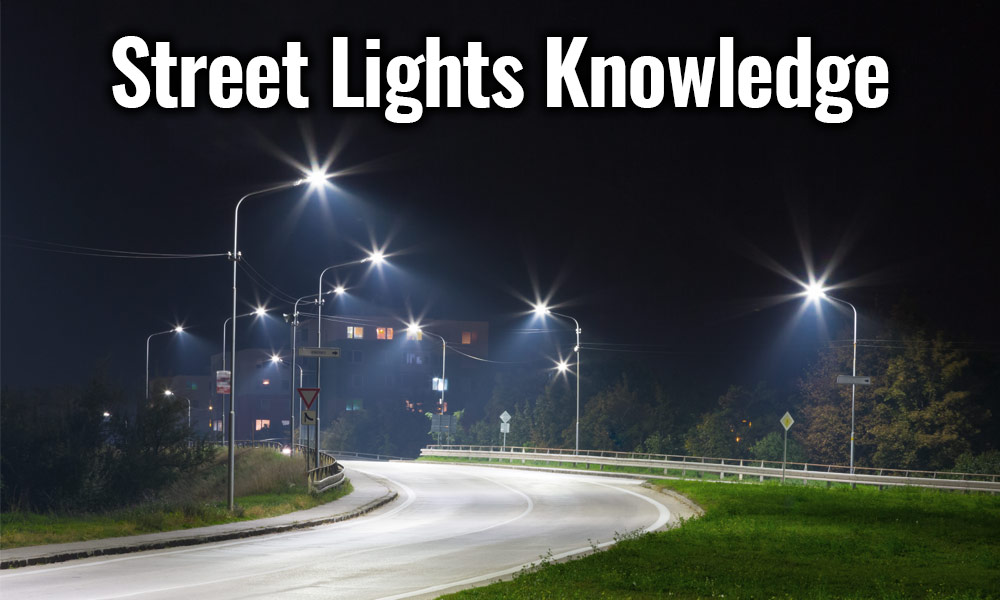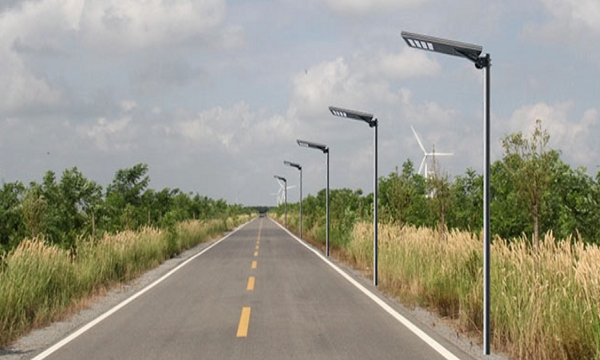As the concept of energy conservation and environmental protection has been valued globally, cities have begun to plan their outdoor lighting design rationally, the most important of which is LED street lights.
In the last four to five years, the concept of smart cities has begun to be promoted and popularized, and “high-cold” smart street lights have become the new darling of urban outdoor lighting.
Smart Street Light Application Case
Some time ago, the news of smart street light poles in Hamburg, Germany attracted a lot of attention. The Hamburg City Hall piloted an integrated smart street light pole project on the highway from Hamburg to Bremen. Its purpose is to make the evenly distributed street light poles in the city become an important node of the smart urban management Internet of Things. This not only meets the basic life needs of people who can enjoy WIFI and mobile phone charging on the road, but also can achieve the control effect of the quality of the lamps. It is the best of both worlds.
In addition to the high-profile appearance of smart street lights in Hamburg, many first-tier cities in other countries have successively implemented smart street light systems. The City of London plans to transform high-pressure mercury lamps to promote the development of urban green lighting. At the same time, the UK plans to take the lead in building an intelligent street lamp monitoring center in the country. The special circuit for street lights adopts a combination of light control and time control, real-time collection of outdoor illuminance changes according to sunrise and sunset periods, and automatically sends switch lights when the set illuminance is reached.
At the end of May 2017, the street lamp maintenance and repair center of the Municipal Facilities Management Office of the Paris Housing and Urban-Rural Development Bureau stated that the Paris intelligent street lamp monitoring system is gradually being built and improved. This system will be widely used on main roads in urban areas. It will not only increase the energy-saving effect of street lamp lighting by another 17%, but also gradually achieve the goal of accurate and efficient street lamp control.
The Integration of Smart Street Lights and the Internet of Things
In February 2018, at a special meeting held by the municipal government of Lyon in France, relevant city leaders revealed that Lyon is trying to install wifi on street lights. In addition, on the roads surrounding communities in Montreal, Canada, pilots have also begun to connect WiFi networks on street lights.
The introduction of concepts such as the Internet of Things and Internet+ has made the concept of smart cities increasingly full. At present, more than 500 cities around the world are conducting smart city pilot projects, with plans to invest more than 10 billion U.S. dollars. Smart street lights have become the top soldiers in building smart cities, and their market demand is also the most urgent.
At the same time, traditional lighting giants such as Philips and General Lighting (GE) or leading traditional street lamp companies have turned to the development of intelligent street lamps. Smart lighting is a highly profitable technical subdivision field, and it is a seamless “double profit” combination with street lights with the same high gross profit.
“All business departments and the senior leaders of the entire company believe that lighting is the most suitable in this opportunity, because the city has a large number of street lights. For smart cities, if every street light is connected to the Internet, every street light is connected to the Internet. Every light pole will become a data platform for a smart network and form a street light network.” said Chen Hanzeng, general manager of GE Lighting China. In the future, one of the development focuses of GE Lighting and the entire GE company is smart street lights, which will be transformed into a smart platform company.
Philips Smart Street Light Layout
Philips is one of the companies that have deployed smart cities earlier. In February 2014, Philips joined hands with Ericsson to innovate LED networked street lights, integrating the advantages of “network connection” and “LED lighting” into a new model of urban lighting services. Then in May, Philips joined hands with Alibaba to enhance its connection and data processing capabilities. This may also be the deployment made by Philips in order to make the “City Touch” intelligent management system project landed in China.
On April 13, according to media reports, the LED street lights in Los Angeles, USA could soon be controlled by a laptop computer. The mobile chip for this street lamp renovation project is provided by Philips. The company claims that this system has bank-level encryption technology and can use mobile phone signal networks of mobile operators. Compared with fixed-line broadband, mobile phone networks are more secure.
Pros and Cons of Smart Street Lights
Although smart street lights are efficient and energy-saving, positioning, monitoring road conditions, wifi sharing and other functions, they provide a lot of convenience for the people’s life. However, some personal privacy and security issues need to be carefully considered, and it is particularly important to ensure the security of users’ data and information.
Secondly, for the intelligent street light system, the current technology is not mature enough, and there are hidden dangers in stability, so technological breakthroughs are the key to future development. So for lighting companies, this will be another big challenge.
Finally, whether the smart street light system can finally be recognized by the market is currently unknown.
Application and Promotion of Smart Light Poles
Just as Li-Fi is setting off a wave of craze around the world, now in the lighting industry, another thing related to communication data and making companies eager to move is smart light poles. New and promising things always attract attention.
It is reported that this smart light pole is different from previous pilot street light charging poles. For example, the 10 pilot street lamp charging piles built in TX Houston last year were limited to charging piles and lighting functions. Also different from general street lamps that only have lighting functions, Shanghai’s smart poles integrate multiple functions.
It is not only a smart energy-saving lighting pole, but also a charging pile for electric vehicles, and it is also equipped with security surveillance cameras. In an emergency, press the “one-click call” button on the light pole to directly contact the nearby police.
Information published by the government, real-time air quality PM2.5 values, commercial catering information, etc., can also be easily accessed on its touch screen. It is also a WiFi base station, and you can enjoy the convenience of wireless Internet access by standing under a street lamp. At the same time, smart light poles have a high degree of functional scalability. In the future, modules such as RFID electronic tags, parking meters, traffic lights, parking signs, and network private car information screens can be further loaded as needed. It is really the “Hornet fighter” in the street light.
Why Are Smart Light Poles So Hot?
First of all, from a big level, there is no doubt that it is the result of the big concept of smart city. As an important carrier of smart city construction, smart street lights will also play a larger “complex” role, using urban street lights as the port of the Internet of Things. It also makes the construction of smart cities more tangible and can be better implemented.
Some experts said: “This Internet of Things, which is the most widely distributed and most evenly distributed in the city, has extraordinary meaning. Based on the construction of informatized and automated systems based on street light poles, the city will’live’.” It is true. The city has a large number of street lamps. On the main roads of the city, there is one street lamp every 30-50 meters, and they are evenly arranged. As the densest urban infrastructure, street lamps are no longer a simple lighting tool.
In addition, the characteristics of “one pole, multiple uses” have also attracted the attention of smart light poles. According to the person in charge of the Shanghai Smart Light Pole Project, since the trial opening of the smart light pole at the end of October, the charging function of new energy vehicles has the highest usage rate among citizens. For the street light management department, it is the remote control dimming function, which can realize energy saving and convenient and effective. In addition, the Wi-Fi function is also concerned by the public. Take the street lamp charging pile, which is currently generally optimistic in the industry, because it only adds a socket and an electric meter to the original telephone pole. This eliminates the need to open new public resources to build charging piles, and subtracts the construction of pipelines, which greatly reduces the overall cost of construction.
Advantages of Smart Light Poles
A smart light pole includes nearly ten road pole functions, so that the chaos of poles can be solved. It can also effectively save urban ground and space resources. It is also a manifestation of the refined development of urban management.
It is worth mentioning that each function on the light pole actually corresponds to a system, such as smart business district, smart municipal administration, smart transportation, smart lighting, etc. Each system corresponds to a city management department, such as business district owners, municipal departments, transportation departments, street light management departments, etc. For a long time, the smart application systems between the various departments of city management have been relatively independent and poorly linked. But after focusing on the smart light poles, the smart systems of various departments can be quickly linked together.
At present, as a comprehensive utilization project of road lighting poles, smart light poles have initially achieved the goals of energy saving, intelligence and multi-function. From then on, street lights across the country are likely to be integrated into the information interaction system and the monitoring system of urban network management.
As the construction of “smart cities” progresses day by day, the Internet of Things information network platform built by the gradual and intelligent upgrade of street lights will play a greater role, thereby expanding the city’s intelligent management services.
How to locate the lighting function in the smart light pole?
Each function of the smart light pole needs to be completed by professional suppliers and operators in the corresponding field, but too many functions are dazzling and sloppy. At the “2015 3rd Internet Smart Lighting Theme E-commerce Forum”, Dou Linping, secretary-general of the China Institute of Illumination, said frankly that lighting products must not excessively pursue functional coverage and lose their essence. For a smart light pole, it must be a light pole first. Therefore, lighting is always the fundamental, followed by other functions.
In the smart light pole, only one lighting can do a lot. With the acceleration of urbanization, the procurement volume and construction scale of urban public lighting facilities are increasing. The consequent contradictions in urban lighting management have become increasingly obvious. The three most prominent contradictions are the huge consumption of energy, the excessively high maintenance cost of lighting fixtures, and the incompatibility with other public equipment.
Loading the intelligent lighting control terminal on the street lamp can solve the above problems well. This has become a general consensus in the industry. In addition, more and more cities have begun to install intelligent control systems while replacing traditional street lamps, and upgrade the implementation of street lamp IoT intelligent management. Shunzhou Technology, which was listed on the NEEQ not long ago, is a typical representative in the field of intelligent control.






